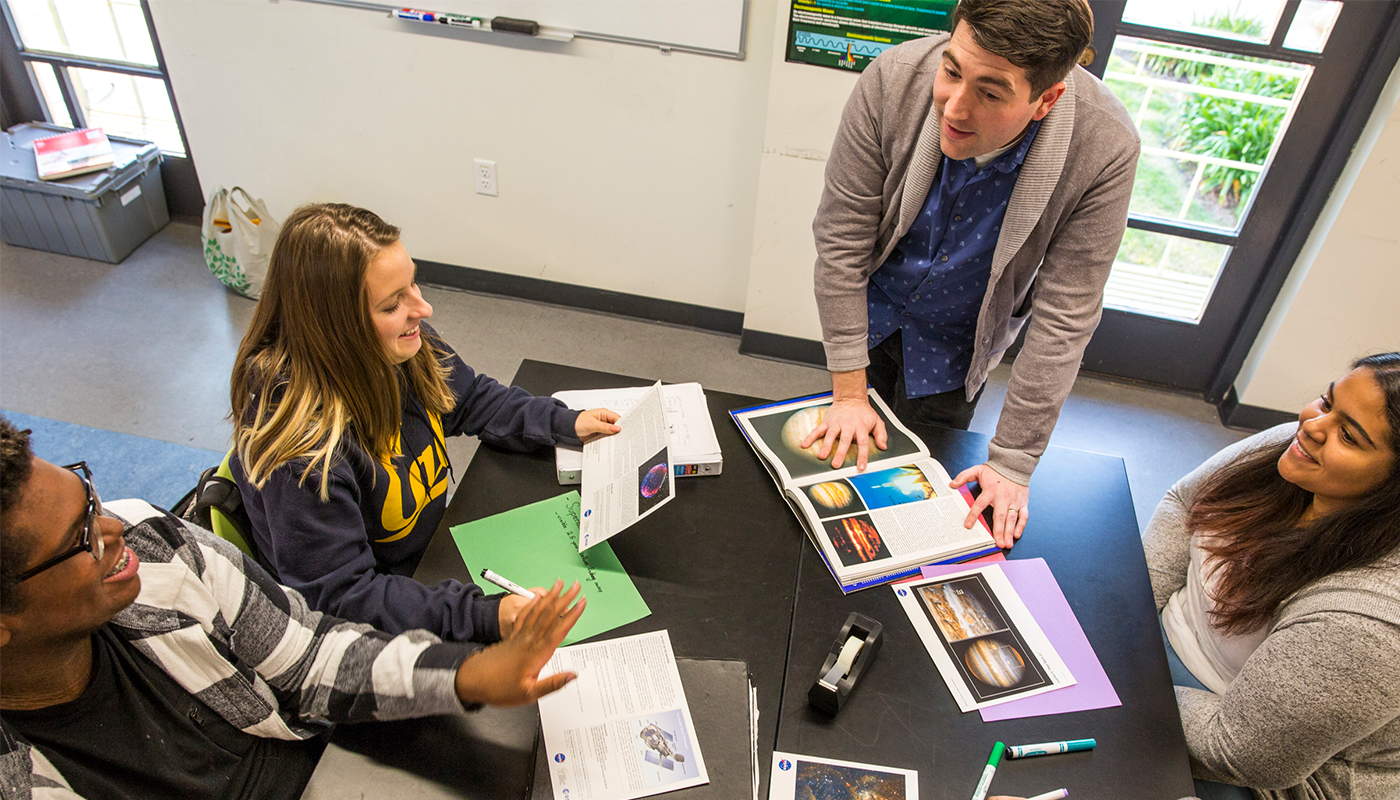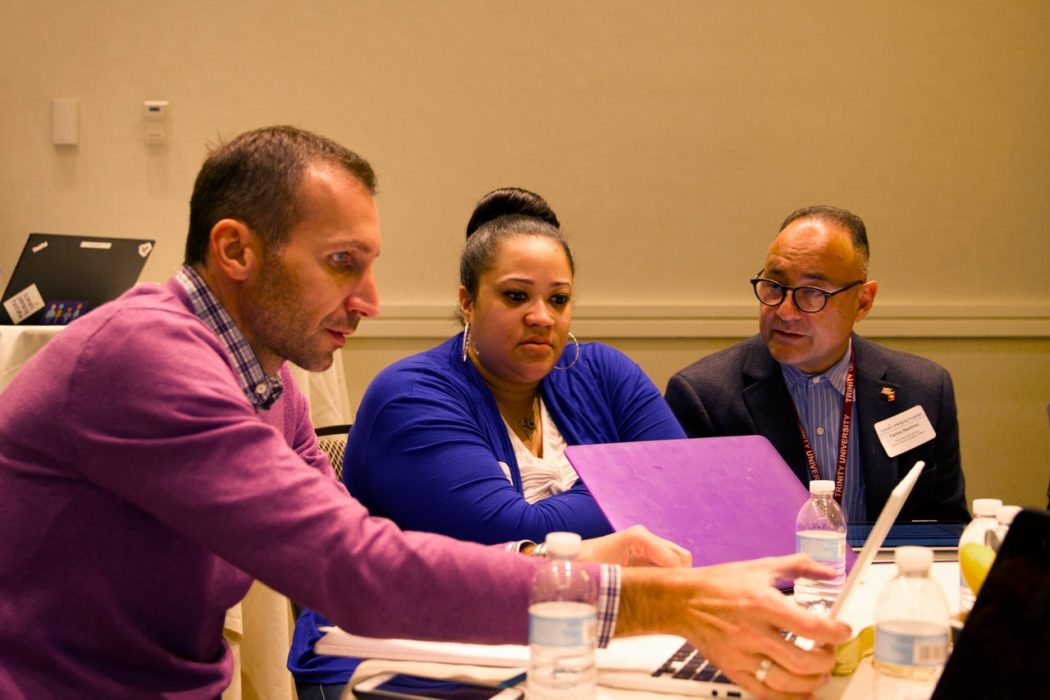
Curriculum development is an art that is part of the everyday fabric of schools and districts across the U.S.
Building a good curriculum is a purposeful and structured process that includes developing the materials and experiences that will effectively deliver learning outcomes — the skills, knowledge, and mindsets and behaviors that Summit Learning believes all students should have in order to live a fulfilled life.
With Summit Learning, a strong project-based curriculum helps students achieve three core learning outcomes — Cognitive Skills, Content Knowledge, and Habits of Success — while bringing that learning to life through real-world projects.
There’s a lot of behind-the-scenes work that happens in creating and maintaining a strong curriculum. We turned to Summit Learning’s Senior Director of Curriculum & Assessment, Joe Bielecki, to get a glimpse of what this process looks like in the Summit Learning Program.
The creative process behind Summit Learning’s project-based curriculum
Developing high-quality projects starts with deeply understanding what students need to learn, which is the content and skill standards for a given course. The projects in the Summit Learning Curriculum are aligned to both the Summit Learning Cognitive Skills rubric, which is used throughout grades 4-12, and a set of standards — such as the Common Core Standards, Next Generation Science Standards, C3 Framework, or the AP Frameworks — dependent on the subject area. Then, the Curriculum team reflects on and builds a project around the best learning experiences that help bring a topic to life.
Joe leads a team of curriculum managers, all of who are former educators and experts in their content discipline. Curriculum managers identify the project-based learning experiences that will help students learn and apply those skills and content in action.
“The question we want to answer is, ‘What are the great student experiences that would bring that learning to life?’” says Joe.
“Maybe it’s a debate connected to events in the Civil Rights era, or a lab report when students are doing a genetics experiment.”
A significant part of producing a good project is figuring out how students will learn the content and cognitive skills that they need to successfully complete a final product. “If I’m doing a debate, I’m going to have to do good research to understand the fundamental content. If I’m assuming the role of a historical character, I’m going to need to understand that character and the opposing characters. If I’m doing a lab, I need to do the investigation. I need to chart my data and analyze it,” explains Joe.
The team then creates lessons around the skills and fundamental content that students need to master in order to complete a project. Teacher empowerment and consistent student feedback are two qualities that the team intentionally builds into every lesson and project within a course. Teachers have the capability to adapt lessons and materials for the individual students in their classroom.
Above and beyond the feedback and interaction received through whole-group lessons, students submit their assignments and can receive real-time teacher and peer feedback through the Summit Learning Platform, which houses the Summit Learning Curriculum and serves as a central place for students to organize their work and keep track of their progress. Students also meet 1:1 with their mentor on a weekly basis to discuss their academic progress and goals.
Read more about The Summit Learning Curriculum in this overview publication, including how the curriculum is created and kept current.
Community feedback makes a stronger curriculum
The Summit Learning Program works with teachers who are using the curriculum, and who help make it stronger.
One of the main inputs, says Joe, is continually listening and responding to the Summit Learning Program’s nationwide network of teachers. Teachers can bring questions about the curriculum to their assigned mentor, who is part of a dedicated team of veteran teachers who work with Summit Learning schools across the country. Teachers can also discuss their experiences with the curriculum at Summit Learning regional trainings, held twice a year in the fall and summer. “Teacher feedback is huge and something we want to always be responsive to,” says Joe.

For example, Summit Learning shifted mathematics to a problem-based format after realizing that a project-based format wasn’t working for students. “Kids were doing some problem-solving and they were talking about math, but they weren’t doing enough math. We needed a [problem-based] curriculum that allowed students to do more math and struggle productively, and that allowed teachers to identify moments of confusion to be able to provide support,” says Joe.
Taking a responsive approach to revising the curriculum based on teacher and student feedback, and aligning those design decisions with the leading edge of learning science, is a consistent characteristics of Summit Learning Program’s Curriculum team.
Learning has no “ceiling” with the Summit Learning Curriculum
In a Summit Learning classroom, there is a rich variety of learning experiences and final products that students complete through projects. Joe advises parents of Summit Learning students to go into a classroom and watch the learning in action. “In addition to whole-group lessons and small group workshops, students are able to work on material independently at their own pace and get lots of feedback from their teacher and peers. They’re able to do peer editing in a flexible learning environment. They can revise and resubmit assignments and quizzes that aren’t their best work. The learning process is a continuous cycle.”
When it comes to the final products that students are producing through projects, there is no ceiling on a student’s level of skill achievement.
“In a lot of curricula, you might have something designed where a student is just trying to get that ‘A’ because you put a box around [whatever the deliverable] is. Part of the nature of assessing student learning with the Cognitive Skills rubric is, there is no ceiling to their learning,” explains Joe.
For example, in developing an argument for a debate, students can continue building on the strength of their claim by doing additional research and strategically thinking about how to pull in more relevant evidence to support their position. Or, they can go further in thinking outside the box.
Last year, Summit Sparks interviewed one 8th grader who merged his love of film with a project on highlighting injustices to create a film on the negative impact of cyberbullying. “Students can go as high as they’re capable of going; the Summit Learning curriculum allows a teacher to give students feedback and to push them to take their learning to the next level.”
Read more about The Summit Learning Curriculum in this overview publication, including how the curriculum is created and kept current.

